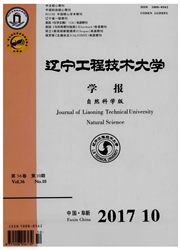

 中文摘要:
中文摘要:
为了解决超薄梁弯曲计算中存在的低阶单元出现自锁和过刚的缺陷问题,采用基于应变梯度理论的假设应变有限元方法,研究了微尺度梁弯曲问题中的尺度效应。在假设应变单元设计中,非局部的应变梯度项通过围绕高斯点的胞元进行数值积分而得到。进一步在本构方程中引入等效应变梯度项,在积分本构方程时就可以反映材料在微细变形时的尺寸效应。首先,构造了一个基于细观机制的应变梯度理论的增强假设应变有限元模型。通过这种方法,非局部的应变梯度通过围绕高斯点的胞元积分而加入到本构方程中。由这个模型,发展了一个增强假设应变有限元程序,利用此程序对一超薄梁受均布荷载作用下,不同厚度,不同网格划分时的弯曲问题进行了数值模拟。结果显示,这种方法能够很好的体现出超薄梁在不同厚度和不同网格划分下的尺度效应。此方法具有较好的适用性。
 英文摘要:
英文摘要:
Attention has been paid to exploring the size effect that frequently exhibited in micro-beam bending. At first, the basic theories of the enhanced assumed strain mode and the mechanism-based strain gradient theory are presented briefly. In this way, strain gradient term by means of cell integration is incorporated into the constitutive material model to reflect the effects of highly localized inhomogeneous deformation. Using the proposed model, an enhanced assumed strain finite element program has been developed and a series of numerical simulations of bending of ultra-thin beam with different thickness and grids density have been carried out. It is shown from the numerical results, that the deflection of the micro-beam is different from that showing in common beam with the size of mini-meter above. Moreover, the scale effect of beams with different thickness and grids density is compared with the published data and good agreement is found.
 同期刊论文项目
同期刊论文项目
 同项目期刊论文
同项目期刊论文
 Influences of interfacial damage on the effective wave velocity in composites with reinforced partic
Influences of interfacial damage on the effective wave velocity in composites with reinforced partic Dendritic growth from a binary system in an external flow: Steady state solution with zero surface t
Dendritic growth from a binary system in an external flow: Steady state solution with zero surface t The steady-state solution of dendritic growth from the undercooled binary alloy melt with the far fi
The steady-state solution of dendritic growth from the undercooled binary alloy melt with the far fi 期刊信息
期刊信息
